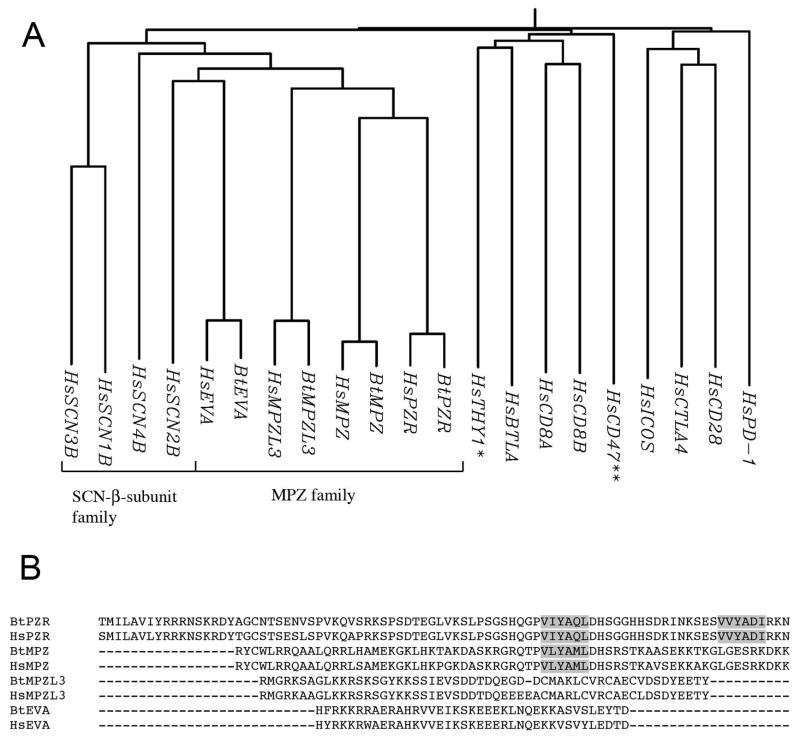FIG. 6.
Phylogenetic tree indicating the relationship between PZR and other single IgV-type membrane proteins. (A) A phylogenetic tree based on the entire sequences of proteins was constructed by the neighbor-joining method. Two families are indicated. PZR is a member of the MPZ family of proteins whose other members include MPZ, MPZL3 protein and EVA. BtPZR, bovine PZR; HsPZR, human PZR; BtEVA, bovine EVA; HsEVA, human EVA; BtMPZL3, bovine MPZ-like protein 3; HsMPZL3, human MPZ-like protein 3; BtMPZ, bovine MPZ; HsMPZ, human MPZ; HsSCN1B, human voltage gated sodium channel subunit beta-1; HsSCN2B, human voltage gated sodium channel subunit beta-2; HsSCN3B, human voltage gated sodium channel subunit beta-3; HsSCN4B, human voltage gated sodium channel subunit beta-4; HsPD-1, human programmed cell death protein 1; HsCD28, human CD28; HsICOS, human inducible T-cell co-stimulator; HsCTLA4, human cytotoxic T-lymphocyte protein 4; HsBTLA, human B- and T-lymphocyte attenuator; HsCD8A, human CD8 α chain; HsCD8B, human CD8 β chain; HsThy1, human Thy-1; HsCD47, human CD47. The tree contains two proteins that are not type I membrane protein. Thy-1 (*) has no transmembrane domain and CD47 (**) is a multi-pass membrane protein. (B) Sequence alignment of the cytoplasmic region of the proteins in the MPZ family. ITIMs are indicated by grey shading.

